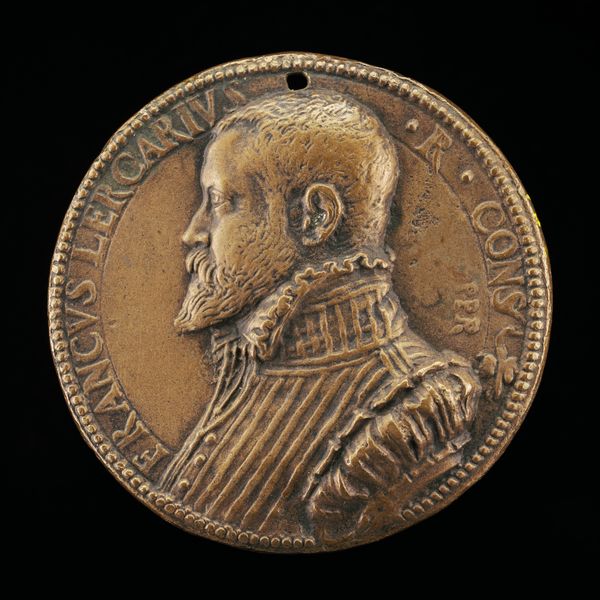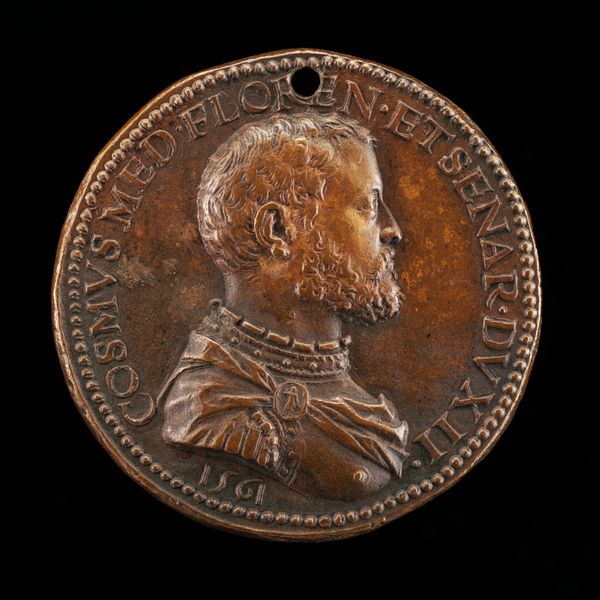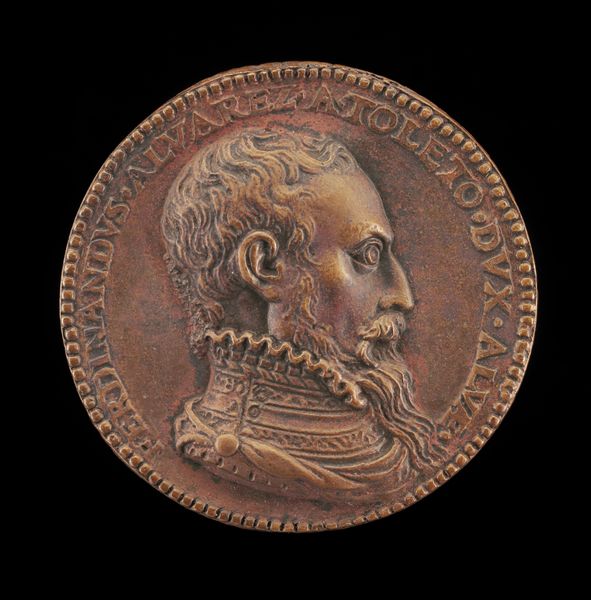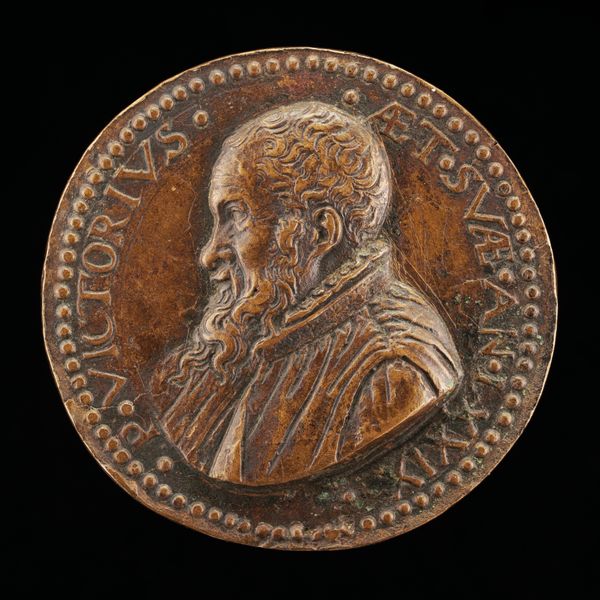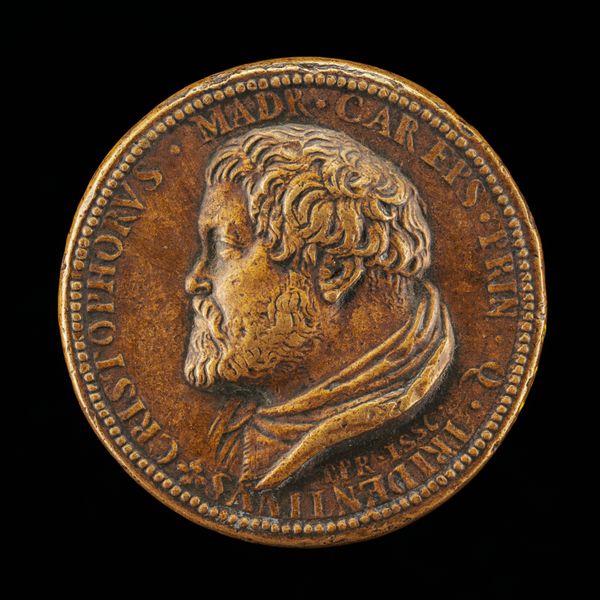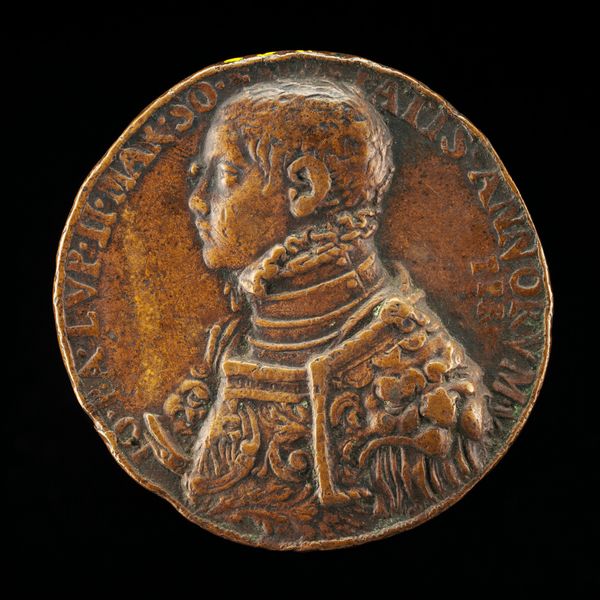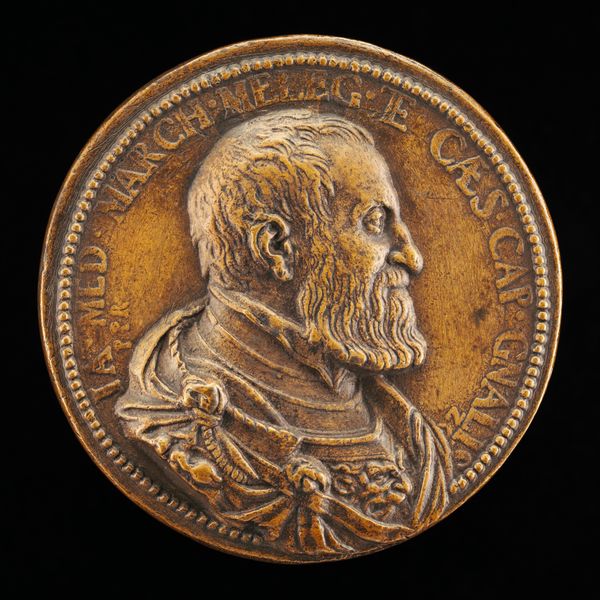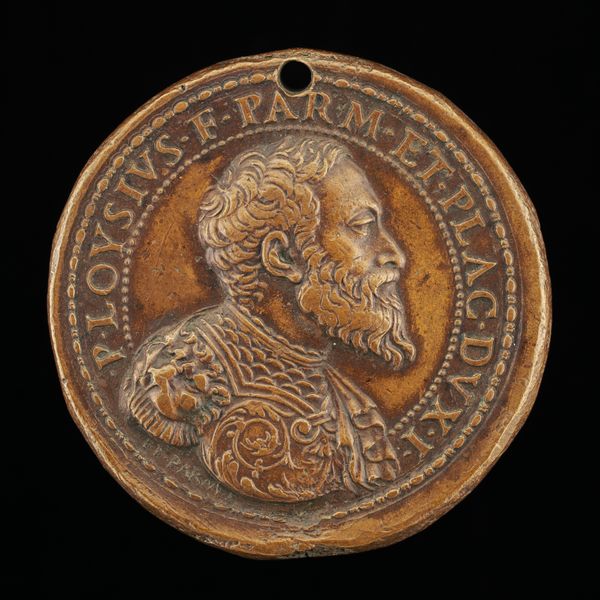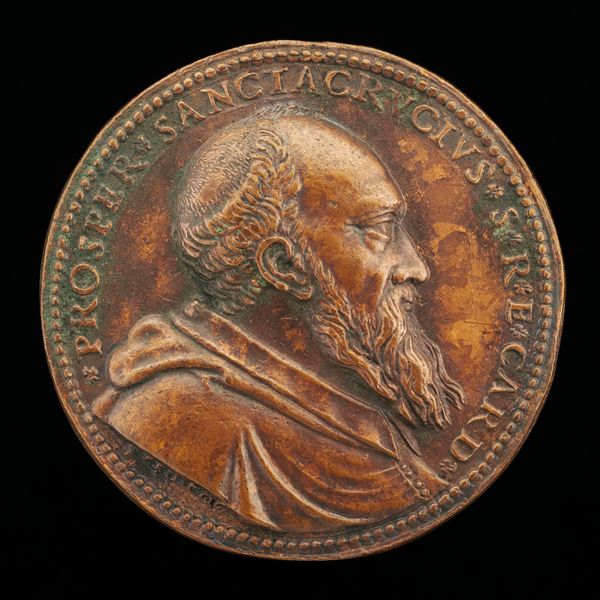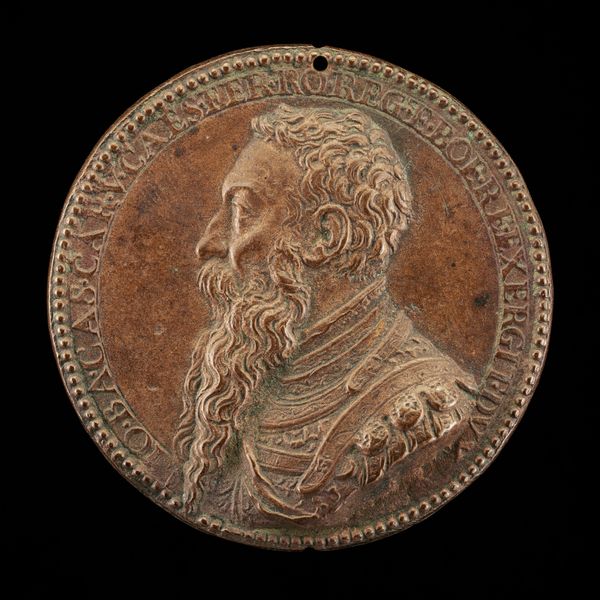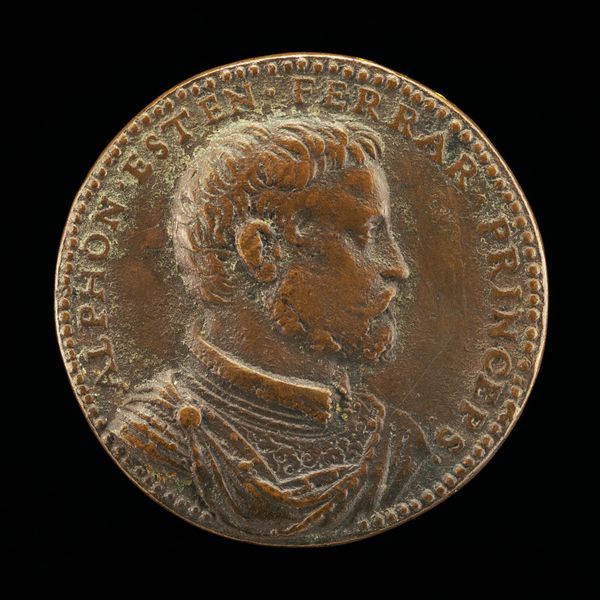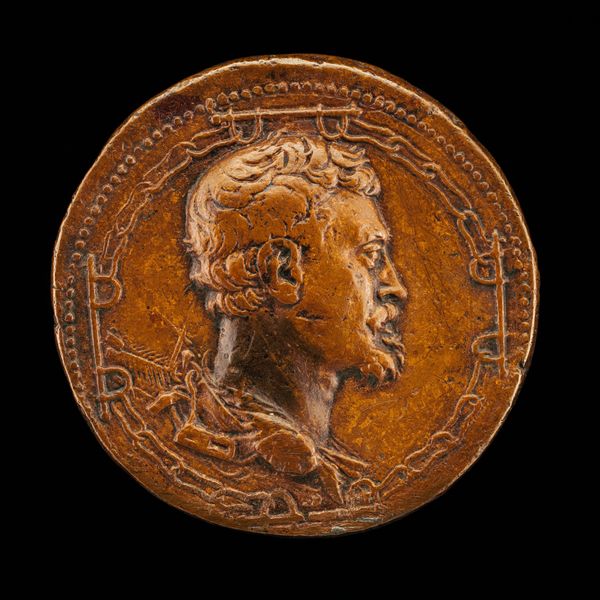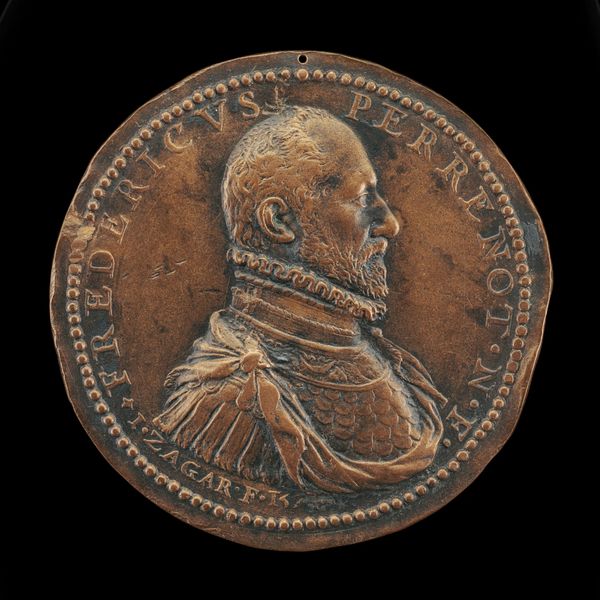![Niccolo Todini of Ancona, Captain of Castel Sant'Angelo, 1585-1591 [obverse] by Domenico Poggini](/_next/image?url=https%3A%2F%2Fd2w8kbdekdi1gv.cloudfront.net%2FeyJidWNrZXQiOiAiYXJ0ZXJhLWltYWdlcy1idWNrZXQiLCAia2V5IjogImFydHdvcmtzLzEwYjEwNWM5LTkwODYtNGVjZS04ZGFlLWQ5YzMwZjdkNWQ1NC8xMGIxMDVjOS05MDg2LTRlY2UtOGRhZS1kOWMzMGY3ZDVkNTRfZnVsbC5qcGciLCAiZWRpdHMiOiB7InJlc2l6ZSI6IHsid2lkdGgiOiAxOTIwLCAiaGVpZ2h0IjogMTkyMCwgImZpdCI6ICJpbnNpZGUifX19&w=3840&q=75)
Niccolo Todini of Ancona, Captain of Castel Sant'Angelo, 1585-1591 [obverse] 1585 - 1591
0:00
0:00
metal, bronze, sculpture
#
medal
#
metal
#
stone
#
sculpture
#
bronze
#
11_renaissance
#
sculpture
#
history-painting
#
italian-renaissance
Dimensions: overall (diameter): 4.5 cm (1 3/4 in.) gross weight: 54.4 gr (0.12 lb.) axis: 1:00
Copyright: National Gallery of Art: CC0 1.0
Editor: Here we have "Niccolo Todini of Ancona, Captain of Castel Sant'Angelo," a bronze medal cast between 1585 and 1591 by Domenico Poggini. I'm struck by the almost tactile quality of the metal, the way the light catches the details of his beard and ruff. What does this piece say to you? Curator: For me, it's about the bronze itself and the labour involved. Consider the mining of the ore, the skill needed to cast this intricate portrait in high relief. The bronze elevates Todini but also serves as a potent symbol of wealth, power, and the processes needed to acquire it. The artistic labor almost memorializes Todini in a sense. It demands our attention to his stature, social capital and consumption as opposed to more idealistic interpretations of “virtue”. Editor: So, it's less about Todini as an individual and more about what his image, replicated in bronze, represents within the socio-economic context of the time? Curator: Exactly! Think about the molds that Poggini had to create; each casting becomes a miniature act of reproduction. How would its circulation affect our understanding of Todini's authority and presence? In many ways, the artistic reproduction and distribution mirror capitalism. Editor: That's fascinating! I hadn't considered the repetitive aspect and its link to wider systems of production. It really reframes how I see this – it’s more than just a portrait; it’s a product. Curator: Precisely. And understanding the 'product' opens up conversations about social status, the use of raw materials, and the relationship between art and capital in Renaissance Italy. Editor: Thanks, that gives me a lot to think about. Looking at the processes by which the medal was made shines a light on so much more than just the face of the person in the medal. Curator: I'm glad I could offer a fresh perspective! There are lots more hidden connections and reflections to think about and explore further.
Comments
No comments
Be the first to comment and join the conversation on the ultimate creative platform.
